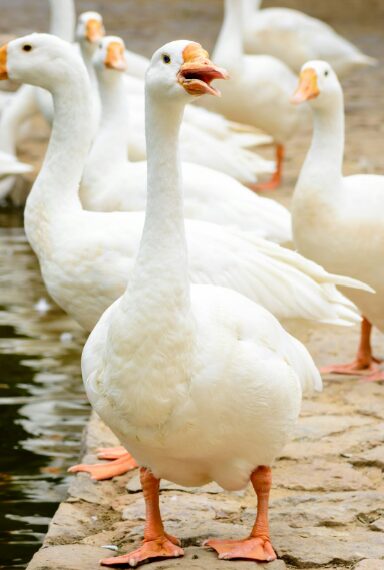There’s nothing quite like the soft, plush comfort of a down pillow. These pillows provide excellent support while maintaining a luxurious, cloud-like feel. But over time, sweat, oils, and dust mites can accumulate, making your once-fluffy pillow a little less inviting.
Proper care is key to keeping your down pillows fresh, clean, and long-lasting. Unlike synthetic pillows, down pillows require special attention to prevent flattening, clumping, or even developing an unpleasant odor. The good news? Cleaning them at home is easier than you might think!
How Often Should You Wash Down Pillows?
You don’t need to wash your down pillows as often as your pillowcases, but they do need a good clean every six months.
Not sure if it’s time? Here are some signs:
- ⬥ Yellow stains from sweat or oils.
- ⬥ A musty or stale smell.
- ⬥ Dust buildup or allergy flare-ups.
But, before you start, consider:
- ⬥ Fabric type: Some pillow casings may be more delicate than others, requiring washing by hand.
- ⬥ Detergent choice: Use a mild, down-safe detergent to preserve the integrity of the feathers.
- ⬥ Drying method: Proper drying is crucial to prevent mildew and maintain fluffiness.
The Process
Step 1: Preparation
- ⬥ Remove pillow cases and protectors.
- ⬥ Check for any rips or tears—washing a torn pillow could lead to a downy mess in your machine.
Step 2: Washing
- ⬥ If possible, use a front-loading washing machine—top-loaders with agitators can be too rough on delicate down feathers.
- ⬥ Select a gentle cycle with warm water to avoid damaging the fill.
- ⬥ Add a mild, down-safe detergent—avoid bleach and fabric softeners, which can strip natural oils from the feathers.
- ⬥ Wash two pillows at a time to keep the machine balanced and ensure an even clean.
Step 3: Rinsing
- ⬥ Run an extra rinse cycle to ensure all detergent residue is removed.
- ⬥ Gently press out excess water—avoid twisting or wringing the pillow, which can break the delicate feathers.
How to Dry Down Pillows Properly
Drying is the most crucial step—if your pillows aren’t 100% dry, you risk mold and mildew growth.
- ⬥ Tumble dry on low heat. High heat can damage the feathers, making them brittle.
- ⬥ Toss in a few wool dryer balls or clean tennis balls—this helps prevent clumping and restores fluffiness.
- ⬥ Fluff the pillows periodically during the drying process to keep them airy and even.
- ⬥ Check for dampness by squeezing the pillow—if you squeeze the pillow and it feels cool inside, it needs more time. And yes, this might take a while – possibly a few cycles.
- ⬥ Prefer air-drying? Lay pillows flat in a well-ventilated area, flipping them occasionally for even drying.
Extra Tips for Keeping Down Pillows Fresh
- ⬥ Fluff daily to maintain loft and prevent the fill from settling.
- ⬥ Air them out in the sun every few weeks—the sunlight naturally freshens and deodorizes down.
- ⬥ Spot clean spills immediately to prevent stains from setting.
- ⬥ Store properly when not in use—avoid plastic bags, which can trap moisture and cause mildew.
Tip: To make maintenance easier, use pillow protectors. They act as a barrier against sweat, dust, and spills, reducing the need for frequent washes.
Caring for your down pillows isn’t just about cleanliness—it’s about preserving their comfort and longevity. A little regular maintenance goes a long way in keeping them fresh, fluffy, and supportive for years to come.
So, the next time you notice your pillows looking a little flat or smelling less than fresh, don’t hesitate to give them a proper wash. Your sleep—and your pillows—will thank you!
PS: No geese or ducks were harmed in this post.
Sleep Hygiene: Creating a Restful Bedroom Environment


